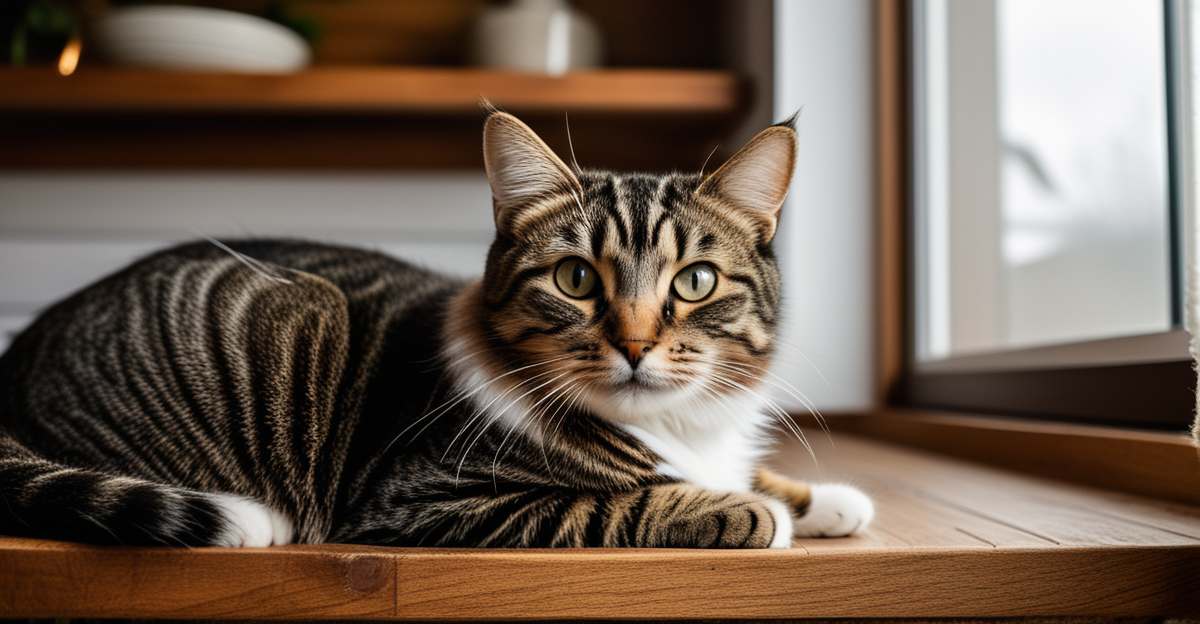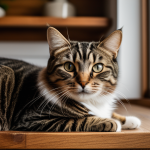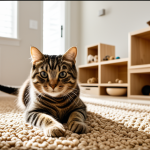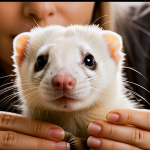Understanding the Needs of Senior Cats
As cats age, their care requirements evolve, necessitating adjustments to ensure their well-being. Senior cat care becomes paramount, considering both physical and environmental needs. Health changes in aging cats, such as arthritis, can greatly influence home design. It’s vital to adapt living spaces to mitigate discomfort and prevent injury.
Behavioral shifts are commonly observed as cats age. Senior cats might become less active, require more frequent rest, or display increased sensitivity to changes. Understanding these feline aging needs is crucial in creating an accommodating environment. Providing them with comfort-centric spaces can significantly enhance their quality of life.
A lire en complément : Ultimate Handbook for Creating an Engaging Play Area for Blind Cats
Accessibility is another critical consideration. Designing a safe home for senior cats involves addressing potential hazards. This includes power cords and high ledges which could cause falls. Low-entry litter boxes, anti-slip mats, and gradual ramps facilitate easier navigation and contribute to greater cat comfort. Emphasizing accessibility not only supports their physical needs but encourages their autonomy. By anticipating the unique challenges faced by senior cats, owners can foster a nurturing and secure habitat.
Space Planning for Senior Cats
Creating an optimal environment for senior felines centres on cat-friendly design. An essential aspect of this is ensuring home layout supports senior cats’ mobility needs with enhanced feline accessibility.
Sujet a lire : Ultimate Guide to Managing Polycystic Kidney Disease in Cats: Innovative Diet Plans and Medication Strategies
Creating Safe and Accessible Pathways
Designing open and clutter-free pathways significantly benefits senior cats. Obstacles can hinder mobility, heightening risk of injury. By arranging furniture to create wide, clear walkways, cats can move freely, reducing stress and promoting independence. Incorporating ramps or steps allows access to favourite resting spots without difficulty, catering to cats with arthritis or similar conditions.
Designated Areas for Rest and Activity
Strategically positioning calming areas for rest alongside engaging spaces for gentle activity supports both energy and relaxation. Senior cats often require more frequent rest; thus, identifying quiet corners for cozy beds enhances comfort. Conversely, placing toys or puzzle feeders in separate, reachable spots encourages mental and physical activity, keeping older cats engaged.
Multi-Level Living Solutions
Introducing multi-level structures maximizes space while maintaining accessibility. Ramps or low steps can facilitate movement to higher levels, offering a variety of vantage points for cats to explore safely. Design adjustments that respect home layouts try to ensure senior cats can enjoy their space with minimal effort.
Furniture Choices for Comfort and Safety
Designing a cat-friendly home for aging felines requires careful selection of cat furniture to ensure both comfort and safety. For senior cats, cushioned and supportive bedding is pivotal. Opt for beds that conform to their bodies, providing relief from joint pain often associated with aging.
Selecting Cat Beds and Resting Areas
Prioritise beds that offer warmth and are easy to access. Elevating the bed slightly can enhance comfort, while ensuring it’s low enough for cats to climb without strain. Consider adding soft blankets for additional comfort solutions.
Choosing Scratch-Resistant and Soft Materials
Material choice is vital in cat furniture. Opt for scratch-resistant fabrics that withstand use without deteriorating. Furniture with soft coverings reduces injury risks and adds comfort. Materials like plush or fleece are ideal, as they are gentle on senior cats’ sensitive skin.
Furniture Arrangement for Easy Movement
Arrange cat furniture with their mobility in mind. Leave ample space between furniture pieces to prevent obstacles that could lead to falls. Paths should be wide, ensuring ease of navigation. This thoughtful arrangement aligns with senior cat needs, promoting independence and security as they move throughout their environment.
Litter Box Accessibility and Maintenance
Ensuring litter box accessibility is crucial for senior cats, who may encounter mobility challenges. Selecting the appropriate litter box size and height is vital. Larger boxes with low entry points minimise strain on aging cats, easing access and use. Elevated entries should be avoided to prevent unnecessary jumping, which could aggravate arthritic conditions.
Regular maintenance keeps the litter environment inviting. Frequent cleaning removes odours and maintains hygiene, encouraging consistent use. Environment-friendly materials can be used for both senior cat hygiene and ecological benefits. For cats with arthritis or mobility issues, consider litter solutions with soft, fine-grained textures.
Placement plays a key role; litter boxes should be in accessible locations, offering privacy yet easy reach. Situating boxes on each floor allows senior cats to reach them without navigating stairs.
Alternative solutions like self-cleaning boxes are advantageous for reducing effort. Additionally, if mobility remains a concern, adaptable units with ramps can enhance usability. Tailoring these features thoughtfully supports aging cats, promoting their independence while ensuring a hygienic and comfortable environment.
Climate Control and Environmental Considerations
Ensuring optimal cat comfort for senior felines involves attentive temperature control and maintaining a favourable indoor environment. Cats are sensitive to fluctuations in climate, especially as they age.
Managing Temperature and Humidity Levels
Keeping a consistent temperature is crucial for senior cats. Aim for a comfortable range between 20-22°C (68-72°F). Extreme temperatures can stress older cats, impacting their overall comfort. Ensure your home is well-insulated and use room heaters carefully. Maintaining proper humidity levels prevents dehydration and respiratory issues. Humidity should ideally range between 40-50%.
Creating a Quiet and Peaceful Environment
Noise can exacerbate stress in senior cats. Soundproofing strategies, such as insulated curtains or carpets, help create a serene atmosphere. Limiting loud activities and providing quiet retreats enhances peace, ensuring older cats are more relaxed in their surroundings.
Natural Light and Its Benefits for Senior Cats
Natural light plays a pivotal role in mood enhancement. Ensure senior cats have access to bright spaces as daylight aids in regulating sleep patterns and behaviour. Allocate areas near windows for resting spots where sunlight streams in, as this can improve their well-being.
Enrichment Activities and Mental Stimulation
Maintaining cat enrichment and mental health is crucial for senior cats. As they age, interactive toys and puzzle feeders promote mental stimulation, helping prevent cognitive decline. These tools challenge cats gently, enhancing their mental sharpness and keeping them engaged. It’s essential to choose items that match their energy levels, allowing for easy interaction without overwhelming them.
Interactive Toys and Puzzle Feeders
Senior cat activities should incorporate carefully selected enrichment tools. Puzzle feeders help slow down eating and encourage thinking, which is vital for cognitive health. Interactive toys, such as feather wands or automated mice, offer mental challenges and encourage movement without strenuous effort.
Designated Play Areas for Safe Exploration
Creating safe play zones within your home elevates senior cat activities. Choose areas free from obstructions to prevent injury. Soft surfaces are beneficial, accommodating their preference for gentle exploration. This approach supports physical and mental well-being, keeping them active in a secure environment.
Incorporating Scratching Posts and Climbing Structures
Senior cats benefit from cat enrichment that addresses their instinctual needs. Scratching posts allow for safe stretching, aiding joint flexibility. Low climbing structures cater to diminished energy levels, enabling vertical exploration without exertion. These installations foster physical health and mental satisfaction.
Expert Insights and Product Recommendations
Caring for senior cats requires informed choices in senior cat products to enhance their quality of life. Expert advice plays a crucial role in identifying effective solutions, improving both daily comfort and overall well-being.
Recommended Products for Senior Cat Care
Veterinary experts often recommend selecting senior cat products that address specific needs. Look for cushioned bedding, low-entry litter boxes, and interaction-enhancing toys. These items are designed with cat comfort in mind, ensuring ease of use while mitigating physical strain.
Tips from Veterinarians and Cat Behaviorists
Veterinarians and cat behaviorists provide valuable tips, emphasizing simplicity and accessibility. Enhance living spaces by incorporating quality of life enhancements such as soft, non-slip surfaces and noise-reducing materials. They advise regular health check-ups to tailor environments suited to aging cats’ needs.
Reviews of Popular Senior Cat Accessories
Reviews highlight accessories like orthopedic beds and food puzzles. Such senior cat products cater to both physical and mental requirements, promoting a nurturing habitat. Selecting products well-received by both caregivers and healthcare professionals ensures a supportive and enriching environment for senior cats.










